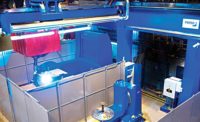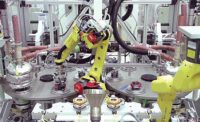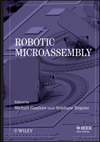Robotic System Autonomously Assembles an IKEA Chair

A pair of six-axis Denso robots assembled a Stefan chair in 8 minutes and 55 seconds. Prior to the assembly, the robots took 11 minutes and 21 seconds to independently plan the motion pathways and 3 seconds to locate the parts.
SINGAPORE—Engineers at Nanyang Technological University (NTU) here have developed a robotic system that can autonomously assemble an IKEA chair. The machines feature off-the-shelf components, such as 3D cameras and robotic arms equipped with parallel grippers. Force sensors determine how strongly the fingers are gripping and how powerfully they push objects into contact with each other.
A pair of six-axis Denso robots assembled a Stefan chair in 8 minutes and 55 seconds. Prior to the assembly, the robots took 11 minutes and 21 seconds to independently plan the motion pathways and 3 seconds to locate the parts.
“For a robot, putting together an IKEA chair with such precision is more complex than it looks,” says Pham Quang Cuong, a professor in NTU’s School of Mechanical and Aerospace Engineering. “The job of assembly, which may come naturally to humans, has to be broken down into different steps, such as identifying where the different chair parts are, the force required to grip the parts, and making sure the robotic arms move without colliding into each other.”
Cuong and his colleagues developed algorithms that enable the robots to take the necessary steps to assemble the chair on their own.
“We are looking to integrate more artificial intelligence into this approach to make the robots more autonomous, so they can learn the different steps of assembling a chair through human demonstration or by reading the instruction manual, or even from an image of the assembled product,” says Cuong.
The robots start the assembly process by taking 3D photos of the parts laid out on the floor to generate a map of the estimated positions of the different parts. Next, using algorithms developed by the engineers, the robots plan a two-handed motion that is fast and collision-free. This motion pathway needs to be integrated with visual and tactile perception, grasping and execution.
To make sure that the robotic arms are able to grip the pieces tightly and perform assembly tasks, such as inserting wooden plugs, the amount of force exerted has to be regulated. Sensors mounted on the wrists help determine the amount of force required, allowing the robots to precisely and consistently detect holes by sliding the wooden plug on the surfaces of the work pieces, and perform tight insertions.
Cuong and his colleagues are currently teaching the robots to perform other tasks, such as bonding automotive glass and drilling holes in metal components used in aircraft manufacturing.
Looking for a reprint of this article?
From high-res PDFs to custom plaques, order your copy today!








